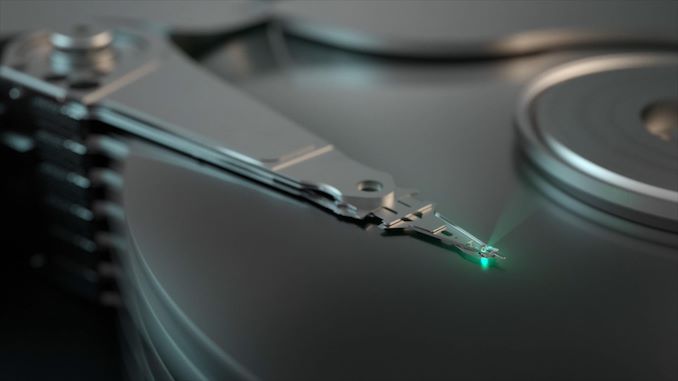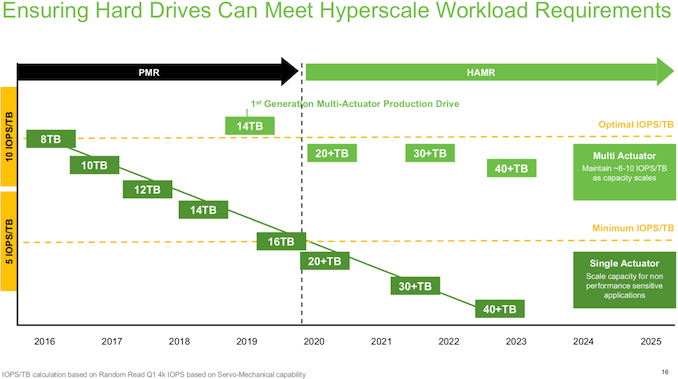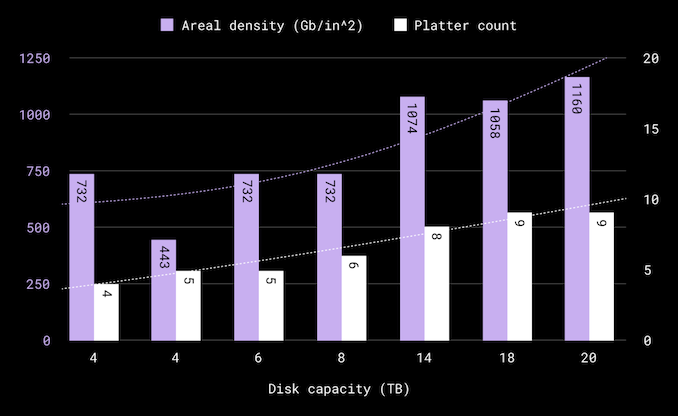Dropbox was among the first large cloud service providers (CSPs) providers to deploy hard drives that use shingled magnetic recording (SMR) to increase storage density of its datacenters. As the company is looking forward to future technology and plans to be one of the first adopters of HDDs featuring heat assisted magnetic recording (HAMR), it is already planning for how HAMR drives will affect its datacenters and how it should prepare for their deployment.
In a surprising candid blog post, Dropbox shared some thoughts and experiences ahead of the deployment of HDDs of based on HAMR technology, which will offer capacities starting from 30TB and spanning all the way to 100TB and higher in the future. In a bid to ensure predictable performance of these hard drives as well as to maintain its quality of service (QoS) requirements for its datacenters, the company will have to alter the designs of its servers and introduce some changes to its infrastructure.
Perhaps the most interesting takeaway is on the subject of vibration control and tolences. HAMR is meant to radically increase areal density of hard drives platters, so it is inevitable that their track density will also get higher. While higher areal density will increase sequential read/write performance of HDDs, it will also make drives more prone to head positioning errors due to high frequency vibrations common in datacenter racks, which will degrade their performance. Vibrations are caused by fans, nearby hard drives when they perform seek actions, and rotational forces of HDDs, so for CSPs like Dropbox the challenge is to minimize impact of vibrations on each drive. The company plans to address vibrations in its 7th generation servers by leveraging HDD Dynamics specifications developed by the Open Compute Project.
"Our focus in the future will be to minimize HDD performance degradation from system vibrations by suppressing structural vibration of the system chassis and reducing fan noise," wrote Eric Shobe, a hardware engineering manager at Dropbox, in a blog post. "Putting more focus into this area will be critical as we onboard next generation HDDs, and it is great to see some efforts already underway in the Open Compute Project (OCP) community. We are planning to leverage the OCP’s HDD Acoustical Surrogate — a new industry-standard specification for vibrational testing — in our 7th generation designs."
Another peculiarity of high-capacity hard drives in general is their decreasing IOPS-per-TB performance amid increasing capacity. Once random performance per terabyte of an HDD drops below certain level (some say below 5 IOPS per TB, but the actual number depends on specific performance requirements), this drive no longer meets service level agreement and therefore QoS requirements. To address these issues, CSPs have to either reduce the amount of capacity they use per drive (i.e., buy smaller drives, or pay for capacity they do not use), implement command queuing and latency-bounded I/O (LBIO) in firmware (i.e., lower performance), use SSD caching (and therefore reduce usage of HDDs), or use hard drives that offer a higher I/O performance. HDD makers, in turn, are addressing reduced IOPS-per-TB performance by producing drives with two independent actuators that essentially double IOPS-per-TB.
"We also anticipate dual-actuator drives may eventually be necessary in order to meet our IOPs/TB requirements," Shobe wrote. "Density increases can only go so far if there is still just one channel for I/O, but two channels will effectively double the IOPs our drives can sustain."
While decreasing IOPS-per-TB performance can be mitigated, I/O performance per server enclosure is another concern that CSPs like Dropbox have.
"Higher density HDDs have challenged us to rethink where other bottlenecks lay in our infrastructure," hardware engineering manager at Dropbox wrote. "For example, in order for our seventh generation server to theoretically support more than 6 PB in a single enclosure, we had to re-architect our network so we can drain and repair data at an acceptable rate."
In general, Dropbox is looking forward adopting higher-capacity HAMR HDDs in its datacenters, but to use them efficiently, it plans to deploy its 7th Generation servers that address vibration and I/O per box concerns.




0 Comments